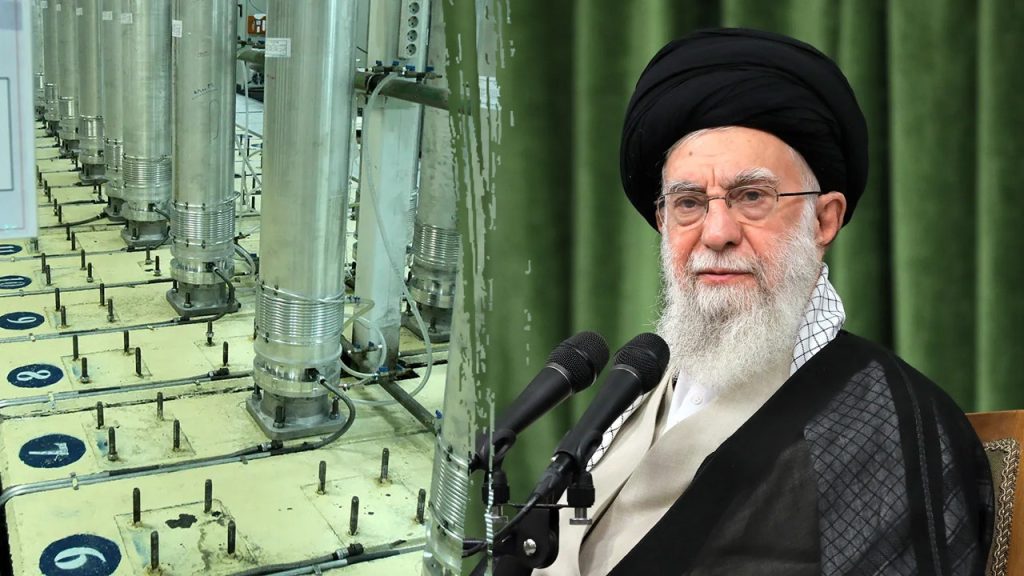Iran’s clandestine pursuit of nuclear weapons capability continues, extending beyond uranium enrichment to encompass weaponization activities. The National Council of Resistance of Iran (NCRI), an opposition group, has revealed alarming developments at key Iranian sites, suggesting a renewed focus on achieving nuclear detonation capabilities. Central to this endeavor is METFAZ, the Center for Research and Expansion of Technologies on Explosions and Impact, an organization responsible for developing crucial detonator technology for a nuclear weapon. The NCRI’s revelations shed light on Iran’s deceptive tactics and the urgent need for increased scrutiny of its weaponization program.
METFAZ’s intensified activities, particularly at the Sanjarian site near Tehran, raise significant concerns. This site, previously central to Iran’s nuclear weaponization efforts under the Amad Plan, was largely dormant for a decade before witnessing renewed activity around 2020. Initial attempts to disguise this activity as filmmaking were followed by more overt efforts to obstruct surveillance, including planting trees and installing security gates. Recent intelligence indicates that top nuclear experts, operating under the guise of the Arvin Kimia Abzaar company, a purported oil and gas front, have been frequenting the site. The company’s connection to a known member of the Islamic Revolutionary Guard Corps further strengthens suspicions of covert nuclear weaponization activities.
The Sanjarian site’s suspected focus is the development of exploding bridgewire (EBW) detonators, crucial components for triggering a nuclear explosion. Iran has a history of concealing its EBW detonator program under the pretext of civilian applications. The International Atomic Energy Agency (IAEA) has previously identified Iran’s detonator development as integral to its nuclear weapons ambitions, despite Tehran’s attempts to link it to aerospace safety and oil and gas exploration. The IAEA’s assessment confirmed that while EBW detonators have legitimate industrial uses, Iran’s specific designs possess characteristics relevant to a nuclear explosive device. This raises serious concerns about the true nature of Iran’s detonator program.
Compounding these concerns is METFAZ’s expanded operations at the Parchin military site, another key location in Iran’s nuclear weapons development network. Specifically, the Plan 6 complex at Parchin, known for its explosive testing and production activities, has undergone expansion. Parchin was targeted in Israeli airstrikes in October 2024, which reportedly destroyed several buildings, including a high explosive test chamber. Despite these setbacks, Iran’s commitment to nuclear weaponization remains undeterred.
Iran’s layered approach to its nuclear program, utilizing front companies, false operations, and deliberate ambiguity, has made it challenging to track and verify its activities. This strategy of deception has hindered the IAEA’s ability to gain a complete understanding of Iran’s nuclear capabilities. The NCRI’s findings highlight the urgent need for increased vigilance and more intrusive inspections to ensure Iran’s compliance with international non-proliferation agreements.
The NCRI’s revelations underscore the seriousness of Iran’s nuclear ambitions and the ongoing challenges in monitoring its clandestine activities. The international community must remain vigilant and exert greater pressure on Iran to ensure transparency and prevent the further development of its nuclear weapons program. The IAEA’s role in verifying Iran’s compliance is crucial, but its effectiveness is hampered by Iran’s deceptive tactics. The ongoing situation demands a concerted international effort to prevent Iran from acquiring nuclear weapons, which would have destabilizing consequences for the region and the world. The NCRI’s intelligence provides valuable insights into Iran’s covert operations and should serve as a call to action for the international community.


